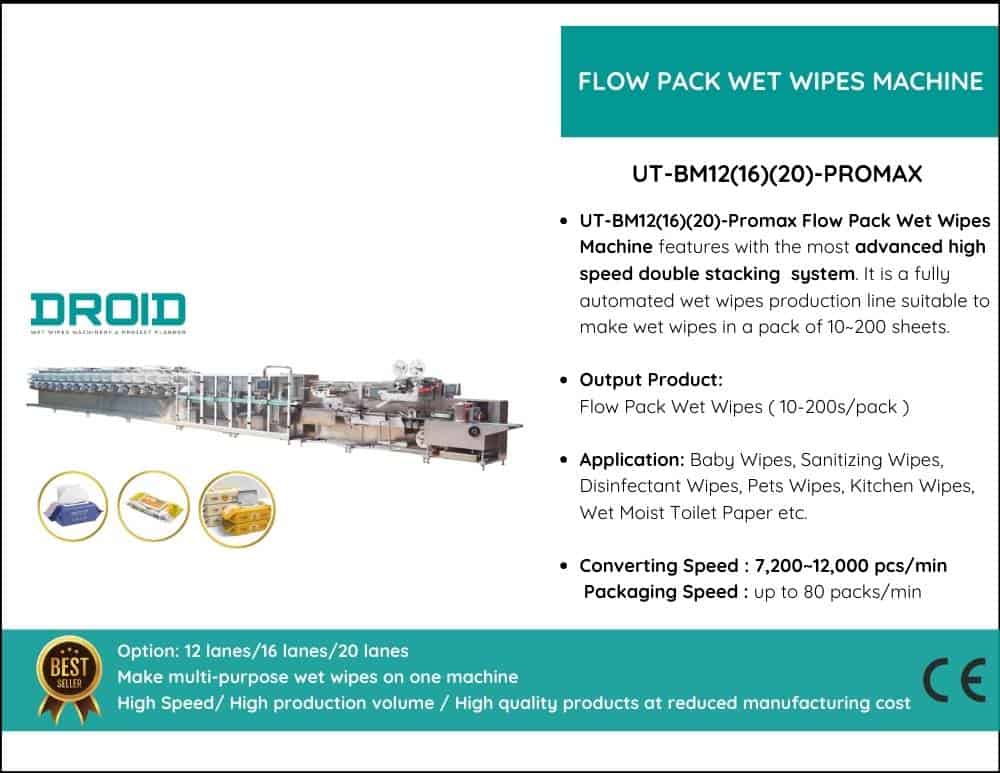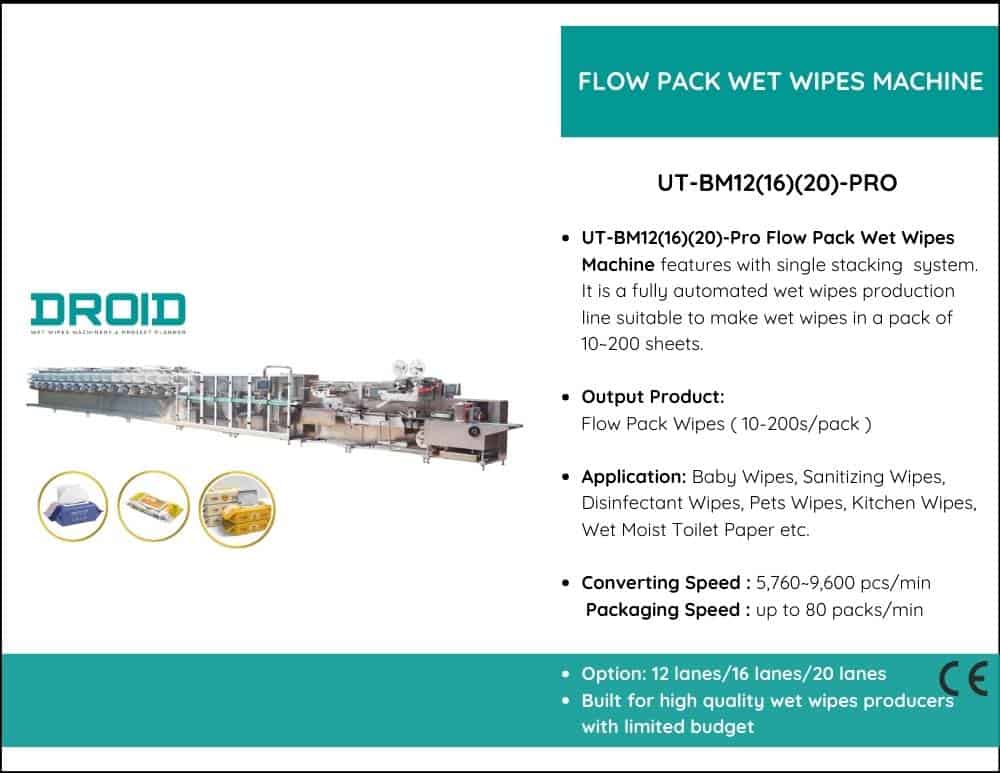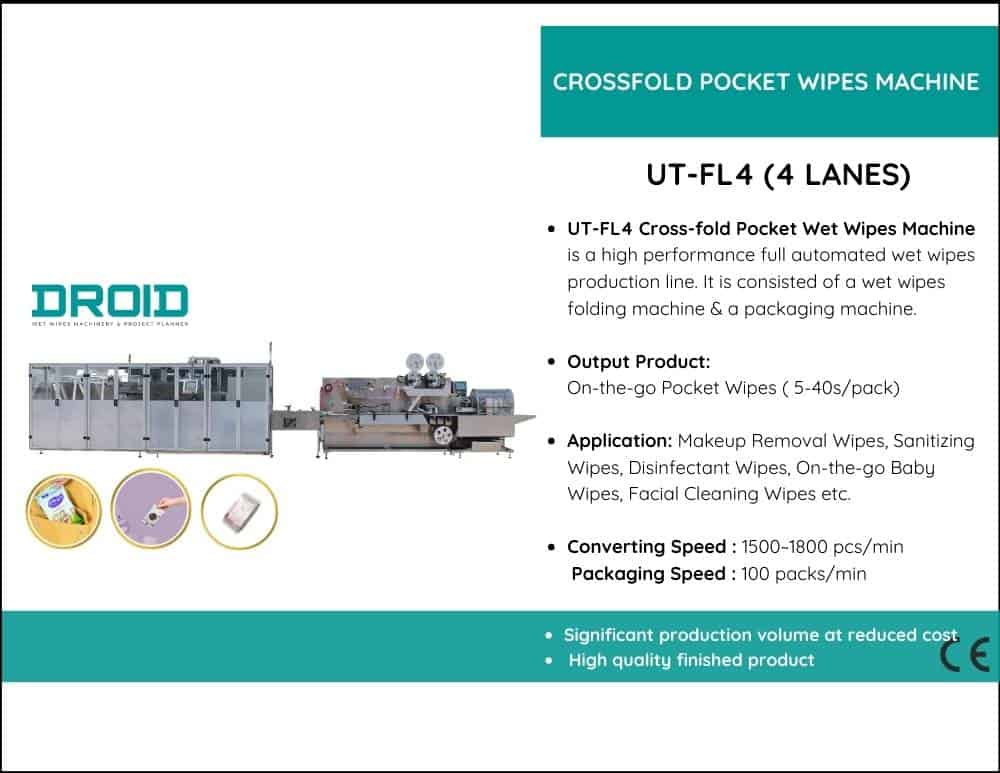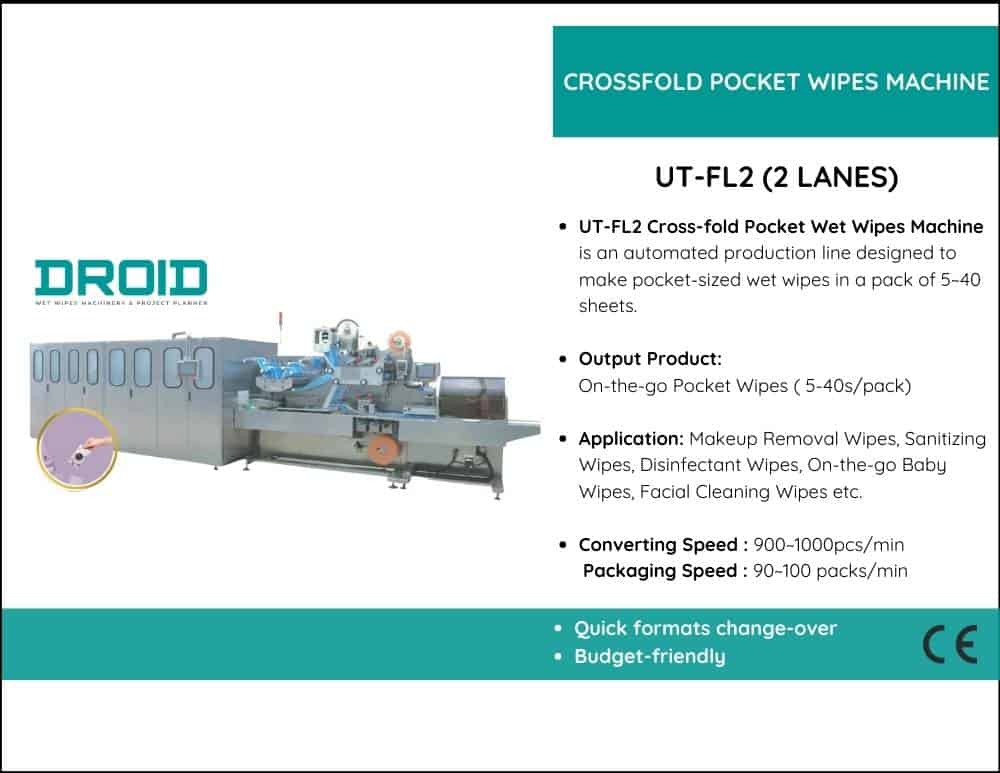1. Manufacturing Bottlenecks Are Restricting Development
Backlogs and delayed shipments are inevitable when your manufacturing line can’t keep up with the increasing demand from customers. This hinders your capacity to grow your business and irritates consumers. It’s a clear sign that your production setup is inefficient if your machines are operating at maximum capacity but yet not fulfilling requests.
Bottlenecks that impede overall workflow may be caused by inconsistent machine performance, sluggish output rates, and excessive downtime. Lead times are impacted, and you are forced to either turn down new orders or risk missing delivery dates, both of which damage your image in the marketplace. Businesses dealing with this problem should assess if switching to automated, high-speed machinery might help them overcome these obstacles.
Purchasing a more sophisticated system guarantees more efficient operations and gets rid of bottlenecks. Wet wipes machines with a large capacity increase productivity and reduce the possibility of delays. By fixing inefficiencies, companies may continue to develop steadily without being slowed down by production limitations.
2. Growing Expenses for Manual Interventions and Labor
Precision is necessary for manufacturing wet wipes, yet human labor is inefficient and expensive when used for repeated operations like feeding materials, folding, and packing. These expenses increase with manufacturing volume, which makes automation a more alluring and economical option.
In addition to increasing the possibility of human mistakes, excessive manual involvement lowers the uniformity of product quality. Operators lose time and increase production downtime if they have to troubleshoot, modify settings, or address mechanical difficulties regularly. Older semi-automated equipment often needs more human supervision, which raises labor costs even further.
Making the switch to fully automated wet wipes machines improves efficiency and lowers operating costs by reducing reliance on human labor. Wet wipes manufacturers can maintain quality and expedite production without incurring unnecessary labor expenses thanks to advanced automation, which guarantees exact control over every stage of the process.
3. Growing Demand from Customers Outpaces Capacity
Wet wipes manufacturers must expand to stay competitive as the market for wet wipes grows, whether as a result of environmental efforts, global health concerns, or hygiene trends. Your company runs the risk of losing clients to quicker, more effective rivals if it has trouble completing orders on schedule.
Sustaining a company depends on meeting consumer demand. Increasing your production capacities with high-speed automation is crucial if your current machinery is running at maximum efficiency but still not meeting your needs. Order fulfillment delays may lead to missed business opportunities, lost contracts, and a tarnished image for the company.
Wet wipes manufacturers may satisfy demand without sacrificing quality by upgrading to high-speed wet wipes manufacturing lines. Long-term success in the cutthroat wet wipes market is ensured by machines with higher production rates and integrated packaging solutions, which assist companies in keeping up with industry expansion.
4. Variability in Finished Product Quality
A good wet wipe should have consistent moisture content, size, texture, and sealing. However, antiquated or ineffective equipment may provide erratic results, resulting in product rejections and consumer complaints. Different cutting, folding, and liquid saturation techniques might produce subpar goods that damage the image of your company.
In the hygiene sector, where customers need dependability and performance, product quality is essential. Your wet wipes’ poor sealing or uneven moisture distribution might be the result of antiquated equipment with imprecise control mechanisms. It is ensured that every product satisfies consumer expectations by investing in newer models with sophisticated monitoring and quality assurance features.
To guarantee production uniformity, modern wet wipes machines are equipped with moisture control systems, precision-cutting technologies, and real-time monitoring. Upgrading lowers the possibility of flaws and increases customer satisfaction by guaranteeing that every batch satisfies strict quality requirements.
5. Expensive Upkeep and Frequent Malfunctions
More frequent repairs are often needed for older equipment, which leads to unscheduled downtime and increased maintenance expenses. Your machines are reaching the end of their lives if your staff is always repairing malfunctions rather than concentrating on production.
Regular faults raise operational costs in addition to interfering with productivity. Purchasing more efficient equipment is often more expensive than the price of replacement parts, emergency repairs, and technician fees. Breakdowns can make production schedules unpredictable, which makes it more difficult to fulfill deadlines and keep things running steadily.
Long-term time and cost savings may be achieved by making the thoughtful switch to a contemporary, low-maintenance wet wipes machine. Modern machines have self-diagnostic features that save downtime and are built to last. Businesses may lower operational risks and boost overall productivity by moving to a more dependable model.
6. Limited Options for Packaging and Customization
The market for wet wipes is changing as customers want additional packaging options, such as bulk packs, eco-friendly materials, and travel-friendly sachets. You can find it difficult to stay on top of market developments if the packaging flexibility of your present machinery is restricted.
Wet wipes manufacturers are unable to provide a wide range of product possibilities since many older equipment are limited to certain pack sizes and sealing types. Businesses want technology that supports biodegradable materials and creative packaging solutions as sustainability becomes a significant selling factor. You run the risk of losing clients to more adaptable rivals if your equipment isn’t flexible enough.
Wet wipes manufacturers can maintain their competitiveness by upgrading to contemporary wet wipes machines with customized packaging possibilities. The flexibility required to adapt to changing customer preferences is provided by sophisticated machinery, whether it be via the use of recyclable materials, resealable labels, or multi-size packaging. Putting money into flexible packaging not only draws in new clients, but also positions your company for success in the future.







